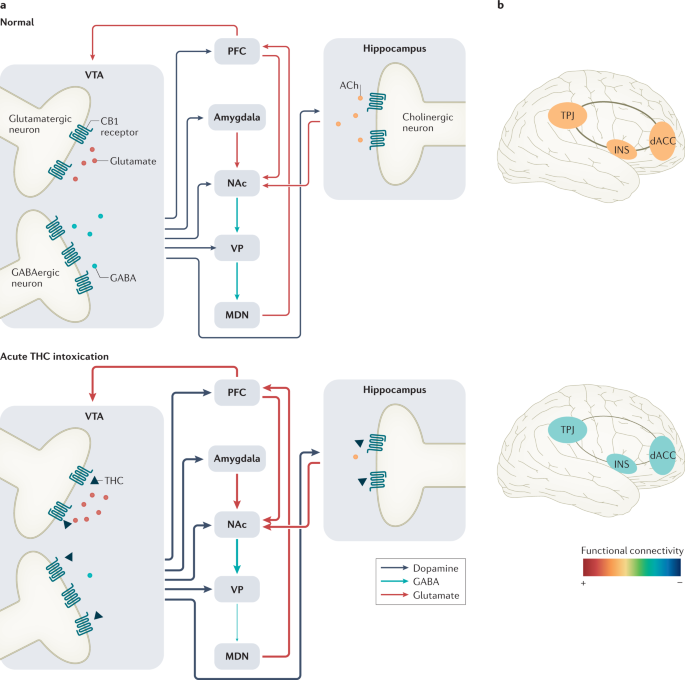Learn about brain health and nootropics to boost brain function
The why behind the high: determinants of neurocognition during acute cannabis exposure

Abstract
Acute cannabis intoxication may induce neurocognitive impairment and is a possible cause of human error, injury and psychological distress. One of the major concerns raised about increasing cannabis legalization and the therapeutic use of cannabis is that it will increase cannabis‐related harm. However, the impairing effect of cannabis during intoxication varies among individuals and may not occur in all users. There is evidence that the neurocognitive response to acute cannabis exposure is driven by changes in the activity of the mesocorticolimbic and salience networks, can be exacerbated or mitigated by biological and pharmacological factors, varies with product formulations and frequency of use and can differ between recreational and therapeutic use. It is argued that these determinants of the cannabis-induced neurocognitive state should be taken into account when defining and evaluating levels of cannabis impairment in the legal arena, when prescribing cannabis in therapeutic settings and when informing society about the safe and responsible use of cannabis. Author information
Contributions
The authors contributed equally to all aspects of the article. Corresponding author
Additional information
Peer review information
Nature Reviews Neuroscience thanks S. Bhattacharyya (who co-reviewed with C. Davies), Z. Cooper, W. Hall and the other, anonymous, reviewer(s) for their contribution to the peer review of this work. Publisher’s note
Springer Nature remains neutral with regard to jurisdictional claims in published maps and institutional affiliations. Glossary
Compounds found in cannabis or that are synthetically produced to mimic naturally occurring cannabinoids. Psychomotor deficits Psychotomimetic effects Endocannabinoids Xenon-enhanced computed tomography A neuroimaging method in which the subject inhales xenon gas to assess changes in cerebral blood flow. Positron emission tomography A magnetic resonance imaging technique that uses radioactive substances known as radiotracers to visualize and measure changes in metabolic processes, and in other physiological activities such as receptor occupancy. Arterial spin labelling A non-invasive magnetic resonance imaging technique that uses arterial water as an endogenous tracer to measure cerebral blood flow. Functional connectivity A measure of similarity or correlation between brain signals arising from anatomically separated brain regions that indicates that the regions are functionally connected. Executive network A frontoparietal brain network involved in sustained attention, complex problem-solving and working memory. Magnetic resonance spectroscopy A non-invasive proton imaging technique that allows for the quantitative assessment of regional brain biochemistry. Functional magnetic resonance imaging A non-invasive technique for measuring and mapping brain activity based on changes in blood oxygen level-dependent signals that indicate underlying neural activity. A brain network primarily consisting of the medial prefrontal cortex, the posterior cingulate cortex and the angular gyrus that is active when a person is focused on internal mental state processes and the brain is at wakeful rest. Inhibitory control A cognitive process that permits an individual to inhibit their impulses in order to select a more appropriate goal-directed response. Single-nucleotide polymorphisms Common genetic variations occurring when a single nucleotide at a single position in the genome differs among people. A disorder arising from repeated or continuous substance use characterized by preoccupation with and impaired control over substance use, as well as physiological features such as tolerance and withdrawal. Pharmacokinetics The disposition of a drug within the body over a period of time as characterized by the four main phases of absorption, distribution, metabolism and elimination. Field sobriety tests Tests of balance, coordination and divided attention that are performed by the police to determine whether a driver is impaired. About this article
Ramaekers, J.G., Mason, N.L., Kloft, L. et al. The why behind the high: determinants of neurocognition during acute cannabis exposure. Nat Rev Neurosci (2021). https://doi.org/10.1038/s41583-021-00466-4